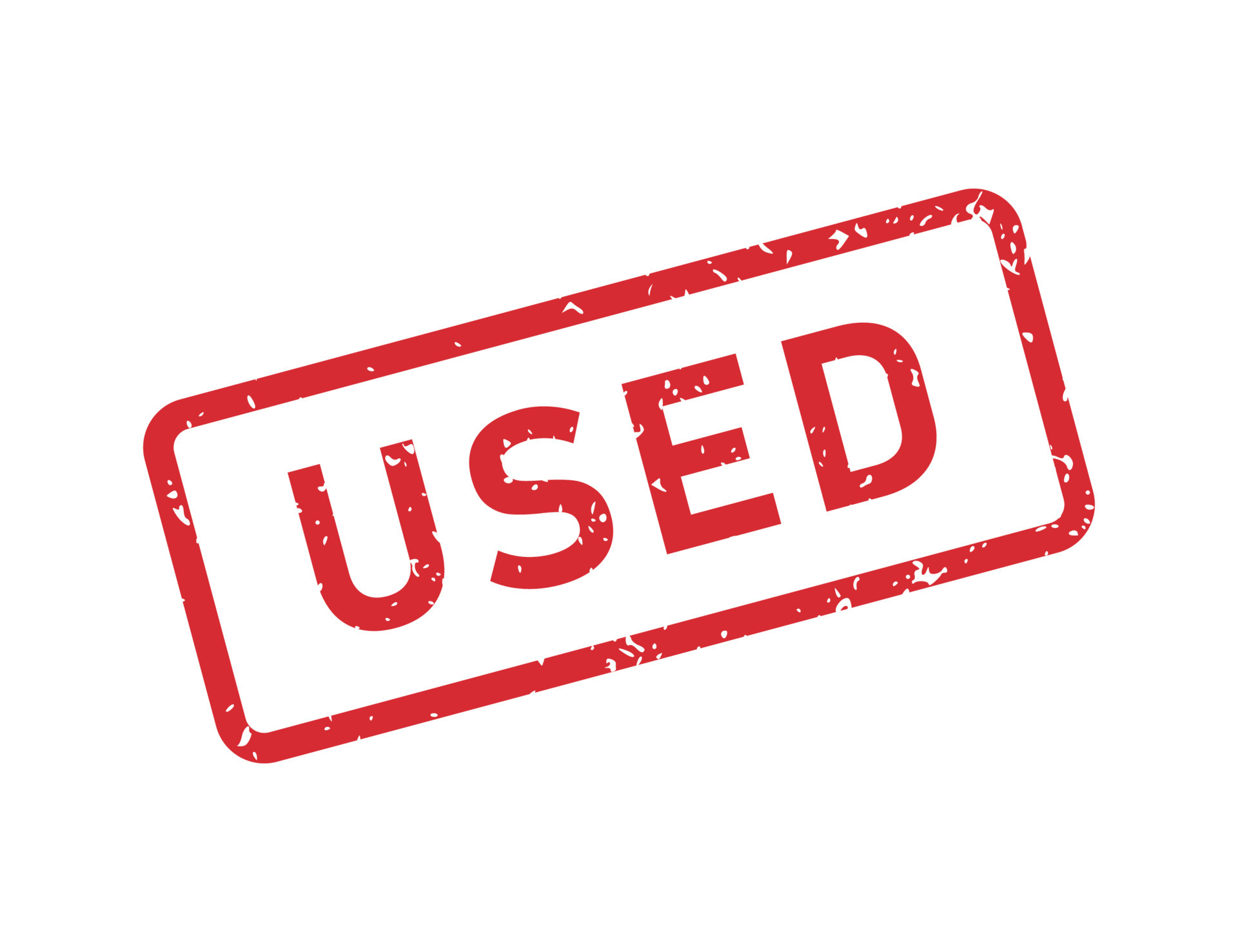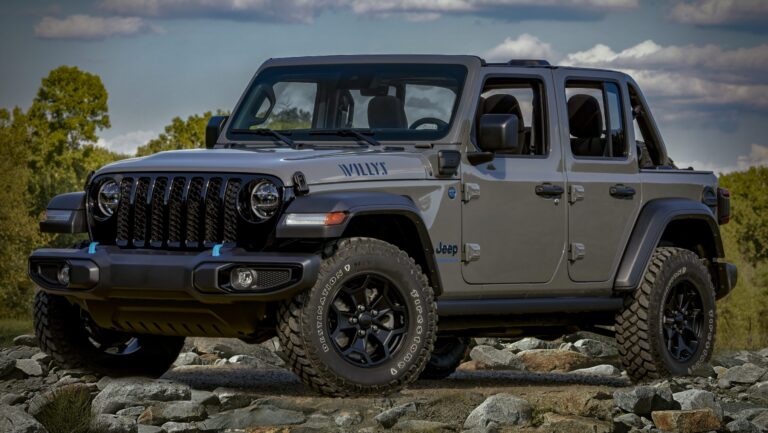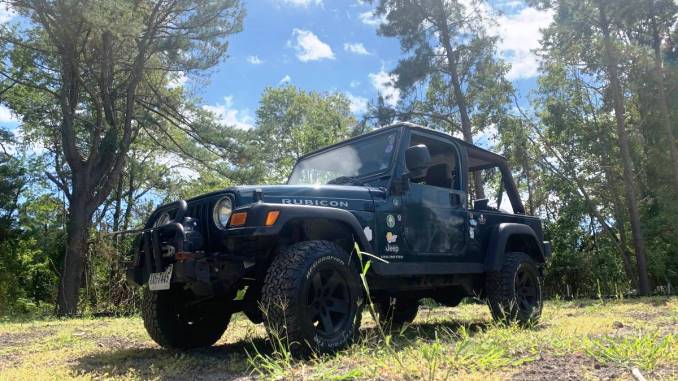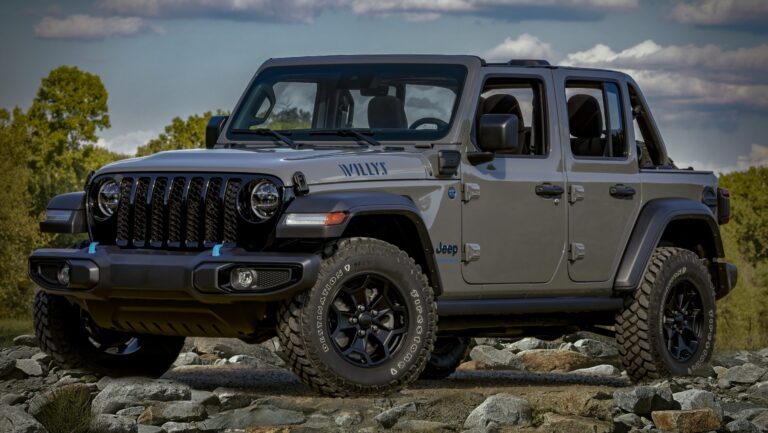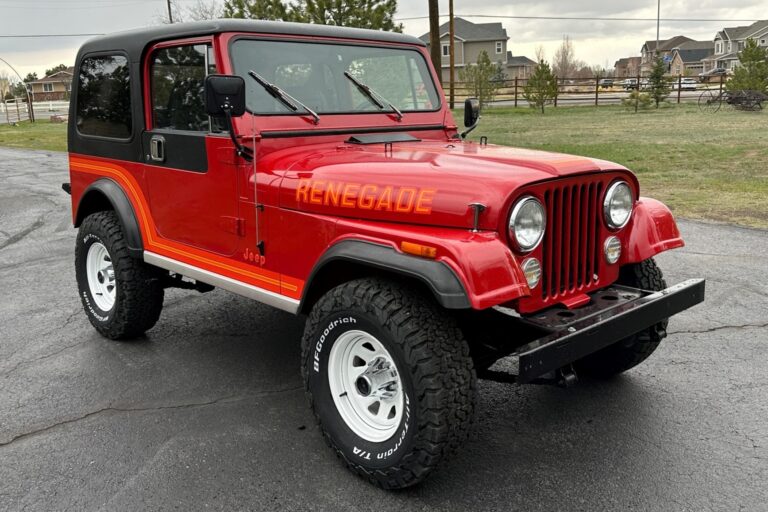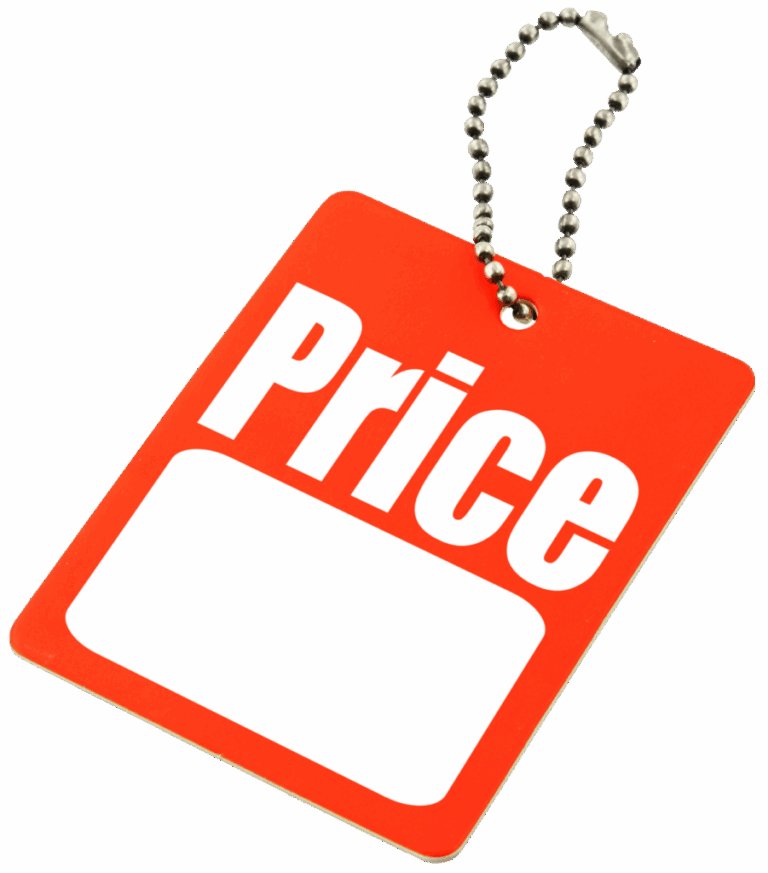Used Jeep Wrangler $6000 For Sale: Your Gateway to Budget-Friendly Adventure
Used Jeep Wrangler $6000 For Sale: Your Gateway to Budget-Friendly Adventure jeeps.truckstrend.com
Introduction: The Allure of an Affordable Icon
The Jeep Wrangler. Just the name conjures images of rugged adventure, open-air freedom, and unparalleled off-road capability. For many, owning a Wrangler is a dream, but the price tag of a new or even a late-model used one can be a significant barrier. This is where the concept of a "Used Jeep Wrangler $6000 For Sale" enters the picture. It represents the ultimate budget entry point into the iconic Jeep lifestyle, offering a tantalizing promise of adventure without breaking the bank.
Used Jeep Wrangler $6000 For Sale: Your Gateway to Budget-Friendly Adventure
However, let’s be clear from the outset: a $6,000 Jeep Wrangler is not a turn-key, pristine vehicle ready for cross-country road trips. It is, almost without exception, a project, a challenge, and an opportunity for the right kind of buyer. This comprehensive guide will delve deep into what to expect when considering a Wrangler at this price point, providing practical advice, essential checklists, and a realistic outlook for anyone eyeing this budget-friendly slice of Americana. If you’re mechanically inclined, enjoy a good challenge, and are looking for a unique vehicle that offers immense satisfaction, a $6,000 Wrangler might just be your ticket to off-road glory.
The Reality of a $6,000 Jeep Wrangler: What to Expect
When you’re looking at a Jeep Wrangler in the $6,000 price range, you are typically entering the realm of older generations, higher mileage, and vehicles that have likely seen their share of adventures – and possibly some neglect.
Expected Generations and Age:
- Jeep Wrangler YJ (1987-1995): These are often the most common finds at this price. Characterized by their square headlights, leaf spring suspension, and a more basic interior. They are robust but prone to significant rust.
- Jeep Wrangler TJ (1997-2006): While less common at the absolute bottom of the $6,000 range, a well-used TJ might surface. The TJ brought back round headlights and introduced a more comfortable coil spring suspension, making them highly desirable. A $6,000 TJ will likely have very high mileage, significant rust, or major mechanical issues.
- Jeep Wrangler JK (2007-2018): It is extremely rare, almost impossible, to find a JK in decent running condition for $6,000. If one appears, assume it has a salvage title, severe frame damage, or non-functional major components.

Condition and Common Issues:
Expect a vehicle with:
- High Mileage: Most Wranglers in this range will have well over 150,000 miles, often pushing 200,000 to 250,000+.
- Significant Rust: This is the #1 killer of older Wranglers. Frame rust (especially around the skid plate, control arm mounts, and spring perches), body rust (fenders, rocker panels, floorboards, cowl), and even exhaust system rust are highly probable.
- Worn Interior: Cracked dashboards, torn seats, non-functional gauges, missing trim pieces, and possibly water damage.
- Mechanical Wear: Leaking fluids (engine, transmission, transfer case, axles), worn suspension components (bushings, ball joints, tie rods), tired brakes, and potential engine/transmission issues (rough idling, strange noises, shifting problems).
- Electrical Gremlins: Faulty sensors, non-working lights, or intermittent electrical problems.
- Previous Accidents/Mods: Many Wranglers at this price have been in accidents or heavily modified. Some modifications can be beneficial, others poorly executed. Always inspect modifications thoroughly.
Benefits and Appeal of a Budget Wrangler
Despite the challenges, there are compelling reasons why a $6,000 Wrangler can be an excellent purchase for the right individual.
- Affordable Entry to the Jeep Lifestyle: This is the most obvious benefit. You get the iconic look, the removable top, and the potential for off-road fun without the hefty price tag of newer models.
- Learning Opportunity: Owning a budget Wrangler is an unparalleled education in automotive mechanics. You’ll learn how to diagnose problems, perform repairs, and understand the intricacies of your vehicle. This knowledge is invaluable.
- Customization Canvas: Since the vehicle isn’t pristine, there’s less apprehension about modifying it. You can experiment with lift kits, tires, armor, and other upgrades without worrying about "ruining" a perfect vehicle. It’s a blank slate for your off-road dreams.
- Simplicity of Older Models: YJs and TJs are generally simpler mechanically than modern vehicles, making them easier for DIY enthusiasts to work on with basic tools and readily available parts.
- Community and Support: The Jeep community is vast and incredibly supportive. You’ll find countless online forums, local clubs, and resources dedicated to helping owners troubleshoot, repair, and modify their Wranglers.
- Unique Satisfaction: There’s a profound sense of accomplishment and pride that comes from taking a budget vehicle and restoring it, making it your own, and conquering trails with it.
Essential Pre-Purchase Inspection: Your Due Diligence Checklist
Buying a $6,000 Wrangler is inherently risky. A thorough inspection is not just recommended; it’s absolutely mandatory. If you are not mechanically inclined, pay for a pre-purchase inspection by a trusted mechanic who specializes in off-road vehicles or older Jeeps.
-
Frame Inspection (CRITICAL!):
- Main Rails: Inspect the entire length for excessive rust, cracks, or previous repairs. Pay close attention to the areas around the skid plate, control arm mounts, and spring perches (especially on TJs). Tap the frame with a hammer – a dull thud or crunch indicates significant rust.
- Body Mounts: Check for rust or damage where the body attaches to the frame.
-
Body Rust:
- Fenders and Rocker Panels: Common areas for rust.
- Floorboards: Lift the carpets (if any) and check for rot, especially near the drain plugs.
- Cowl and Windshield Frame: Rust here can lead to leaks and structural issues.
- Door Jambs and Tailgate: Check for rust and alignment issues.
-
Drivetrain:
- Engine:
- Leaks: Look for oil, coolant, or power steering fluid leaks.
- Sounds: Listen for knocking, ticking, or excessive valvetrain noise.
- Smoke: Check exhaust for blue (oil), white (coolant), or black (fuel) smoke.
- Idle: Should be relatively smooth for an older engine.
- Transmission:
- Manual: Check clutch engagement, shifting smoothness, and listen for grinding or popping out of gear.
- Automatic: Check fluid color (should be red, not brown or black), look for leaks, and feel for hard shifts or slipping.
- Transfer Case: Check for leaks, ensure it shifts smoothly into 2H, 4H, and 4L. Test 4WD.
- Axles: Look for leaks at the differential covers and axle seals. Listen for whining or grinding noises during the test drive.
- Driveshafts and U-joints: Check for play or rust.
- Engine:
-
Suspension & Steering:
- Bushings: Inspect all control arm, track bar, and sway bar bushings for cracks or deterioration.
- Ball Joints/Tie Rods: Check for play in the steering linkage and front end.
- Shocks and Springs: Look for leaks on shocks, and inspect springs for breaks or excessive sag.
- Steering Box: Check for leaks and excessive play in the steering wheel.
-
Brakes:
- Check pad thickness, rotor condition, and look for fluid leaks around calipers/wheel cylinders.
- Test emergency brake.
-
Electrical System:
- Test all lights (headlights, tail lights, turn signals, brake lights).
- Check all gauges, wipers, horn, radio, and HVAC system.
- Look for any exposed or frayed wiring.
-
Interior & Top:
- Seats: Check condition, adjustability.
- Dashboard: Look for cracks, missing components.
- Soft Top/Hard Top: Inspect for tears, missing windows, frame damage, or proper sealing. These can be expensive to replace.
-
Paperwork & VIN Check:
- Ensure it’s a clean title. A salvage or rebuilt title significantly impacts value and can indicate severe damage.
- VIN: Match VIN on title to the vehicle. Run a CarFax or AutoCheck report (though less comprehensive for older vehicles, it can still reveal major accidents or title issues).
-
Test Drive:
- Drive on varying surfaces (pavement, gravel, bumps).
- Listen for unusual noises (clunks, squeals, grinding, whining).
- Check steering response, braking effectiveness, and transmission shifting.
- Engage 4WD in a safe, non-paved area to ensure it works.
Budgeting Beyond the Purchase Price: Hidden Costs
The $6,000 purchase price is just the entry fee. A realistic budget for a Wrangler at this price point must include funds for immediate repairs and ongoing maintenance.
-
Immediate Repairs (Budget $1,000 – $3,000+): Unless you’re incredibly lucky, your $6,000 Wrangler will need something right away. This could include:
- New tires (easily $500-$1000+)
- Brake overhaul ($300-$800+)
- Fluid changes (engine oil, transmission, transfer case, differentials, coolant, power steering, brake fluid) ($100-$300 DIY)
- Basic tune-up (spark plugs, wires, air filter) ($50-$200 DIY)
- Rust remediation (can range from a few hundred to several thousand if professional welding is needed).
- Fixing major leaks or drivetrain issues.
-
Ongoing Maintenance: Older vehicles require more frequent attention. Factor in regular oil changes, lubrication of chassis components, and proactive replacement of worn parts.
-
Parts Cost: While parts for YJs and TJs are generally affordable and widely available (both OEM and aftermarket), the costs add up quickly.
-
Insurance: Get insurance quotes before buying. Older, modified vehicles can sometimes be more expensive to insure.
-
Tools: If you plan to do your own work, factor in the cost of essential tools (socket sets, wrenches, jack stands, torque wrench, etc.).
-
Modifications (Optional): This is where budgets truly explode. A simple 2-inch lift kit can be $500-$1000+, and bigger tires can easily exceed that. Set a realistic modification budget after addressing mechanical needs.
Where to Find a $6,000 Jeep Wrangler
Finding a Wrangler at this price point requires patience and knowing where to look.
- Online Marketplaces:
- Craigslist: Often the best source for private party sales. Be wary of scams and low-ball offers.
- Facebook Marketplace: Similar to Craigslist, but often with more photos and easier communication. Join local Jeep groups on Facebook, as members sometimes sell their project vehicles.
- Local Classifieds: Less common now, but still worth checking.
- Word-of-Mouth: Let friends, family, and mechanics know you’re looking.
- Auctions (Repo/Salvage): High risk, potentially high reward. Vehicles here are often sold "as-is" with little to no inspection possible. This is only for experienced buyers.
- Small Independent Dealerships: Sometimes, a small used car lot might take an older Wrangler as a trade-in and sell it cheaply "as-is" to avoid putting money into it. Less likely to be a good deal than a private sale.
Negotiation and Smart Buying Strategies
- Knowledge is Power: Use your thorough pre-purchase inspection findings as leverage. Point out every flaw and potential repair cost.
- Be Prepared to Walk Away: Don’t get emotionally attached. There will always be another Wrangler.
- Cash in Hand: Private sellers often prefer cash and may be more willing to negotiate for it.
- Consider the "As-Is" Sale: Most $6,000 Wranglers will be sold "as-is." Understand that this means the seller is not responsible for any issues after the sale.
- Bring a Friend/Mechanic: A second pair of eyes, especially an experienced one, can spot things you miss and help keep emotions in check.
- Research Comparable Sales: Look up what similar Wranglers (same year, condition, mileage) have sold for in your area to gauge a fair price.
Price Table: What $6,000 Buys You in a Used Jeep Wrangler
This table outlines the typical characteristics of a Used Jeep Wrangler available for approximately $6,000. It’s crucial to remember that individual vehicle conditions vary widely.
| Feature | Jeep Wrangler YJ (1987-1995) ~$6,000 | Jeep Wrangler TJ (1997-2006) ~$6,000 |
|---|---|---|
| Price Point | More common in this range | Less common, usually higher mileage/issues |
| Engine Options | 2.5L 4-cyl, 4.2L I6, 4.0L I6 | 2.5L 4-cyl, 4.0L I6 |
| Transmission | Manual or Automatic | Manual or Automatic |
| Mileage (Expected) | 180,000 – 250,000+ miles | 150,000 – 220,000+ miles |
| General Condition | Fair to Poor, significant wear | Fair to Poor, significant wear |
| Common Issues | Extensive frame/body rust, worn drivetrain, electrical, leaks, tired suspension | Frame rust (especially rear/skid), worn drivetrain, leaks, saggy suspension, interior wear |
| Interior | Very worn, cracked dash, torn seats, missing trim | Worn, cracked dash, torn seats, potential water damage |
| Exterior | Dents, scratches, faded paint, rust, worn soft top/damaged hard top | Dents, scratches, faded paint, rust, worn soft top/damaged hard top |
| Required Work | Likely needs major rust repair, full mechanical overhaul, safety checks | Likely needs rust repair, mechanical overhaul, safety checks |
| Daily Driver? | Unlikely without significant investment and ongoing maintenance | Unlikely without significant investment and ongoing maintenance |
| Ideal Buyer | Dedicated DIY mechanic, project seeker, classic Jeep enthusiast | Dedicated DIY mechanic, project seeker, off-road builder |
| Pros | Lowest entry cost, simple to work on, classic Jeep aesthetic | Coil spring comfort, slightly more modern, better aftermarket support |
| Cons | High probability of major rust, rougher ride (YJ), basic features | Still high probability of rust and major issues, parts can be slightly more expensive than YJ |
Frequently Asked Questions (FAQ)
Q1: Is a $6,000 Jeep Wrangler a good daily driver?
A1: Generally, no. A Wrangler at this price point will almost certainly require significant work to be reliable enough for daily commuting. Expect frequent maintenance and potential breakdowns until major issues are addressed.
Q2: What is the most common problem with cheap Jeep Wranglers?
A2: Rust, especially frame rust, is by far the most critical issue. It can compromise the vehicle’s safety and structural integrity, and it’s often expensive to repair properly.
Q3: Can I take a $6,000 Wrangler off-roading immediately after buying it?
A3: It is highly advised against taking it on challenging trails without a thorough inspection and addressing any critical safety or mechanical issues. A breakdown on the trail can be dangerous and costly. Light trails might be okay after a basic safety check.
Q4: How much should I budget for repairs after purchasing a $6,000 Wrangler?
A4: A realistic initial budget for repairs should be at least $1,000-$3,000, and potentially more if major issues like engine/transmission work or significant rust remediation are needed. This is in addition to the purchase price.
Q5: Are parts for older Wranglers expensive?
A5: Parts for YJs and TJs are generally affordable and widely available from aftermarket suppliers. However, labor costs for professional installation can quickly add up.
Q6: What’s the best year or generation to look for at this price point?
A6: The TJ (1997-2006) is often preferred due to its more comfortable coil spring suspension, improved engine options (especially the 4.0L I6), and slightly more modern design. However, a decent TJ for $6,000 will be harder to find than a YJ, and will likely have more issues. A YJ (1987-1995) might be a better option if you’re on a stricter budget and comfortable with leaf springs and simpler mechanics, but be extra vigilant about rust.
Q7: Should I buy a Wrangler with a salvage title at this price?
A7: Only if you fully understand the implications. A salvage title means the vehicle was declared a total loss by an insurance company, usually due to severe damage. While it lowers the price, it makes financing and insurance difficult, and future resale value will be severely impacted. It also means you’re buying a vehicle with a history of significant damage that may not have been fully repaired.
Conclusion: The Project, The Passion, The Payoff
A "Used Jeep Wrangler $6000 For Sale" isn’t just a vehicle; it’s a statement. It’s a commitment to a project, an embrace of a learning curve, and an investment in a unique passion. For the right person – someone with mechanical aptitude, a realistic understanding of potential challenges, and a desire to customize and maintain their own vehicle – it offers an incredibly rewarding path into the world of Jeep ownership.
While it demands patience, financial foresight, and a willingness to get your hands dirty, the payoff is immense: a custom-built, capable, and iconic off-road machine that you truly understand from the ground up. It’s not about the initial $6,000; it’s about the journey, the satisfaction of overcoming obstacles, and the sheer joy of experiencing the legendary freedom that only a Jeep Wrangler can offer. Approach it with open eyes, a detailed checklist, and a healthy dose of enthusiasm, and your budget Wrangler could become your most cherished adventure companion.
